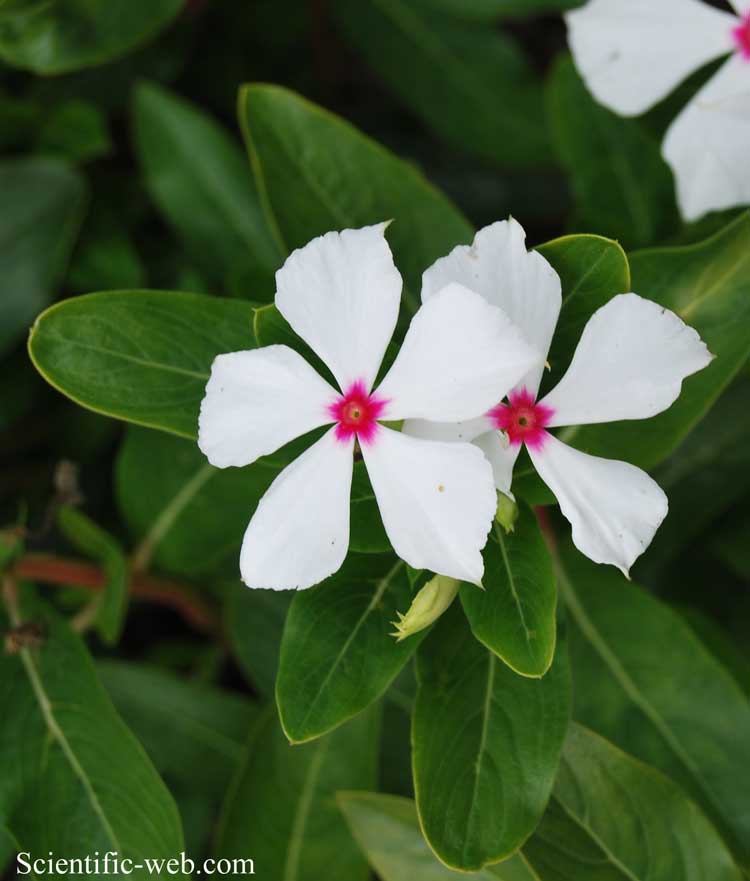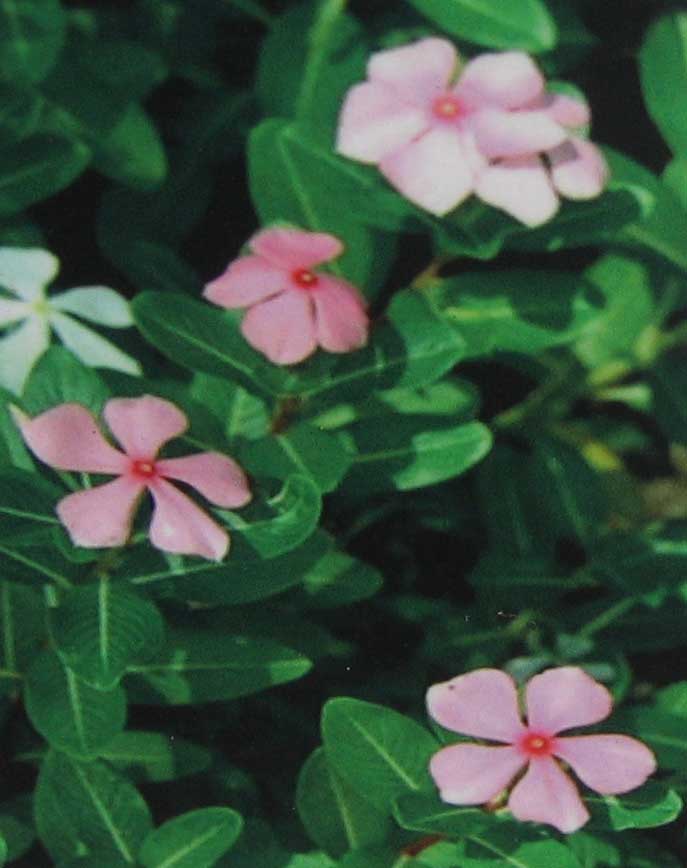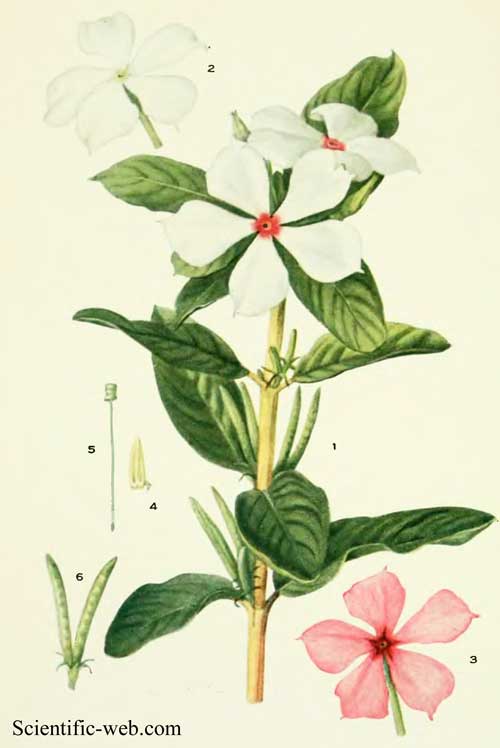Catharanthus roseus , Photo: Michael Lahanas Cladus: Eukaryota Name Catharanthus roseus (L.) G.Don, Gen. Hist. 4(1): 95. 1837.
Catharanthus roseus Basionym * Vinca rosea L., Syst. Nat., ed. 10. 944. 1759. References * A General History of the Dichlamydeous Plants... London 4:95. 1837
Catharanthus roseus
------------- Catharanthus roseus (Madagascar Periwinkle) is a species of Catharanthus native and endemic to Madagascar. Synonyms include Vinca rosea (the basionym), Ammocallis rosea, and Lochnera rosea; other English names occasionally used include Cape Periwinkle, Rose Periwinkle, Rosy Periwinkle, and "Old-maid".[1][2] In the wild, it is an endangered plant; the main cause of decline is habitat destruction by slash and burn agriculture.[3] It is also however widely cultivated and is naturalised in subtropical and tropical areas of the world.[4] It is an evergreen subshrub or herbaceous plant growing to 1 m tall. The leaves are oval to oblong, 2.5–9 cm long and 1–3.5 cm broad, glossy green, hairless, with a pale midrib and a short petiole 1–1.8 cm long; they are arranged in opposite pairs. The flowers are white to dark pink with a darker red centre, with a basal tube 2.5-3 cm long and a corolla 2–5 cm diameter with five petal-like lobes. The fruit is a pair of follicles 2–4 cm long and 3 mm broad.[5][6][4][7] This conflict between historical indigenous use, and recent patents on C.roseus-derived drugs by western pharmaceutical companies, without compensation, has led to accusations of biopiracy.[8] It can be dangerous if consumed orally.[3] It can be hallucinogenic, and is cited (under its synonym Vinca rosea) in Louisiana State Act 159. As an ornamental plant, it is appreciated for its hardiness in dry and nutritionally deficient conditions, popular in subtropical gardens where temperatures never fall below 5 °C to 7 °C, and as a warm-season bedding plant in temperate gardens. It is noted for its long flowering period, throughout the year in tropical conditions, and from spring to late autumn in warm temperate climates. Full sun and well-drained soil are preferred. Numerous cultivars have been selected, for variation in flower colour (white, mauve, peach, scarlet and reddish-orange), and also for tolerance of cooler growing conditions in temperate regions. Notable cultivars include 'Albus' (white flowers), 'Grape Cooler' (rose-pink; cool-tolerant), the Ocellatus Group (various colours), and 'Peppermint Cooler' (white with a red centre; cool-tolerant).[4] Chemistry Several chemical compounds can be found in Catharanthus roseus. Alkaloids * Vincristine,[11] used in cancer chemotherapy.
* Hirsutidin[13]
1. ^ Flora of Madagascar: Catharanthus roseus Source: Wikispecies, Wikipedia: All text is available under the terms of the GNU Free Documentation License |
|



